
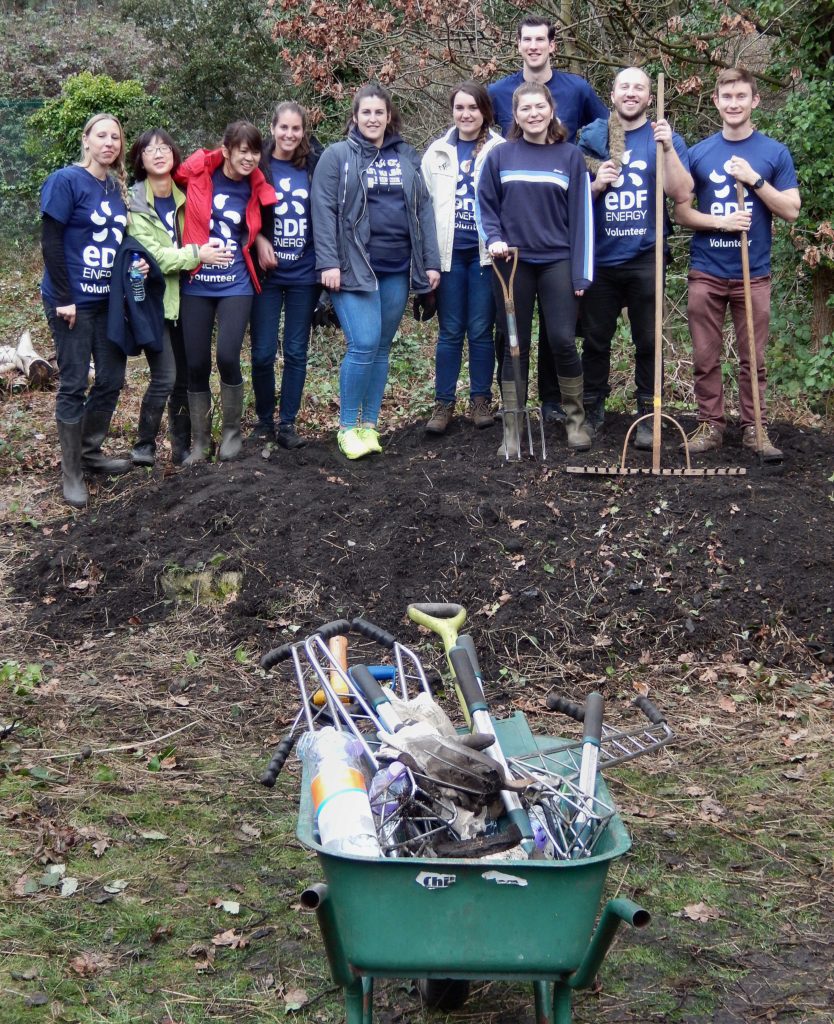
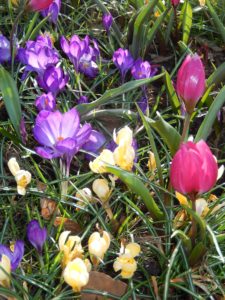

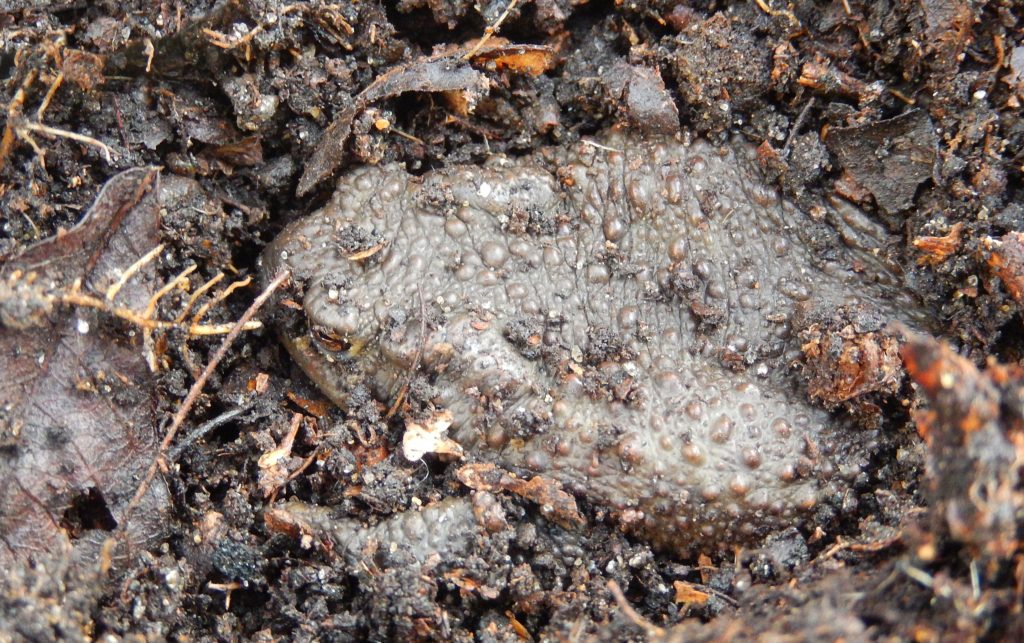

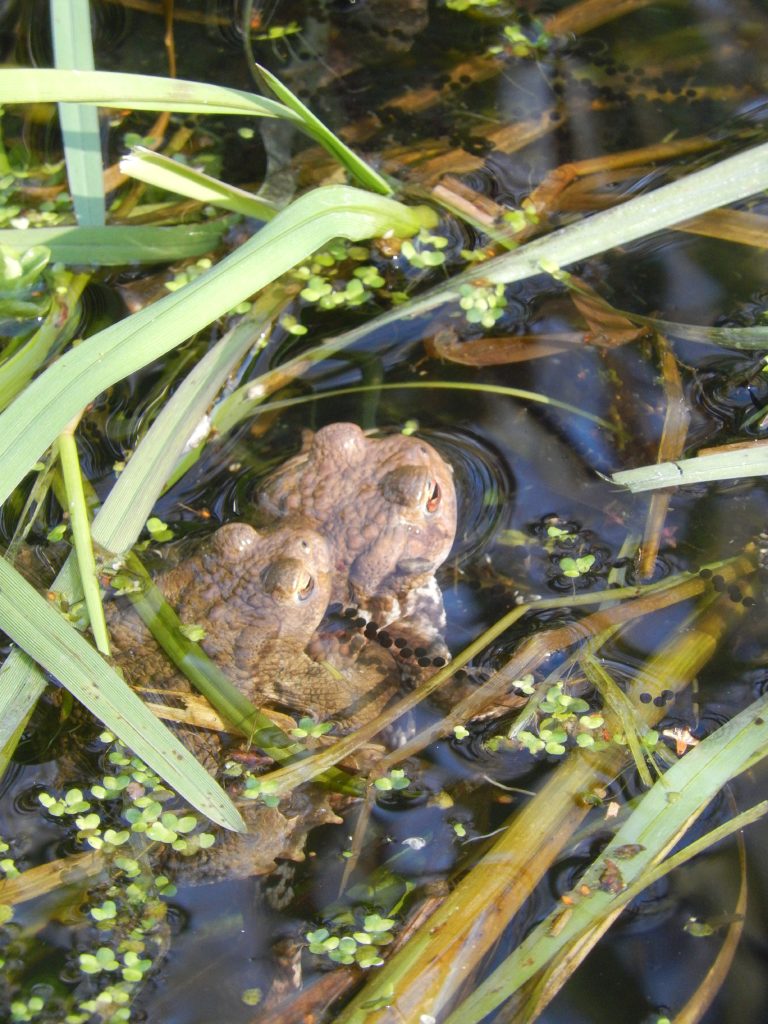
It was a good day for amphibians all round, as we also saw a pair of Smooth Newts in amplexus in the pond. I didn’t get a photo for the good reason that unlike the Common Frog, they remain elusive and well-camouflaged at the bottom of the pond. And the frogs were still going at it full throttle, with around 20 splashing about beside the island.
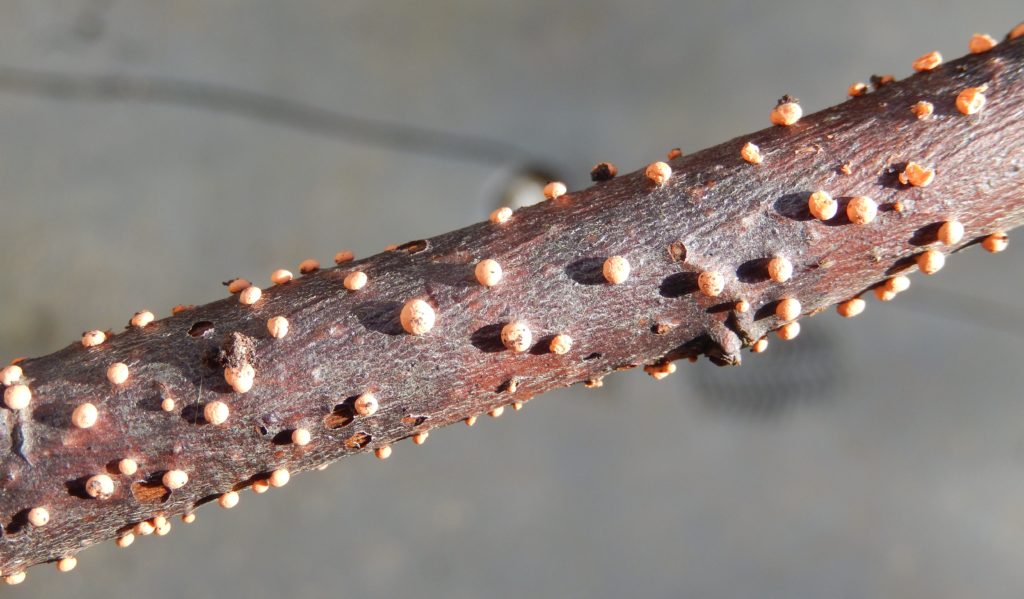
Storm Doris is blowing a gale today, but in between the showers and racing ragged clouds was a fine half-hour of warm sunshine, the daffodils glowing yellow. A cut twig caught my eye in the brilliant light, speckled with tiny spheres, the pinkish fruiting bodies of the Ascomycete Nectria cinnabarina, a small saprophytic fungus, also called Coral Spot.
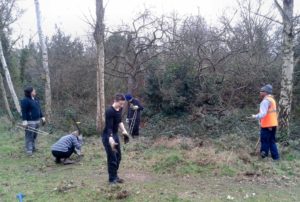
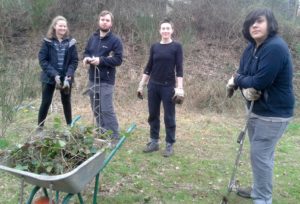
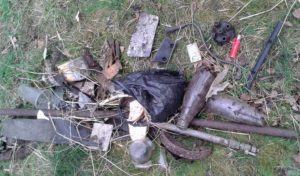
Distributor bits, wing mirror, electrical leads, yes, there used to be a garage over the fence. What with old rusty pipes, cigarette lighters, glass milk bottles (remember them?) and remains of workers’ lunches, it was quite a haul. We dug out some champion brambles and quite a few enormous nettles, too.
I also found some bits of Asbestos roofing, but we left them in situ as there was a Smooth Newt sheltering beneath them. All in all, it’s amazing what people will sling over a fence. We were happy to leave the North bank in a better state than it’s been in for many years.
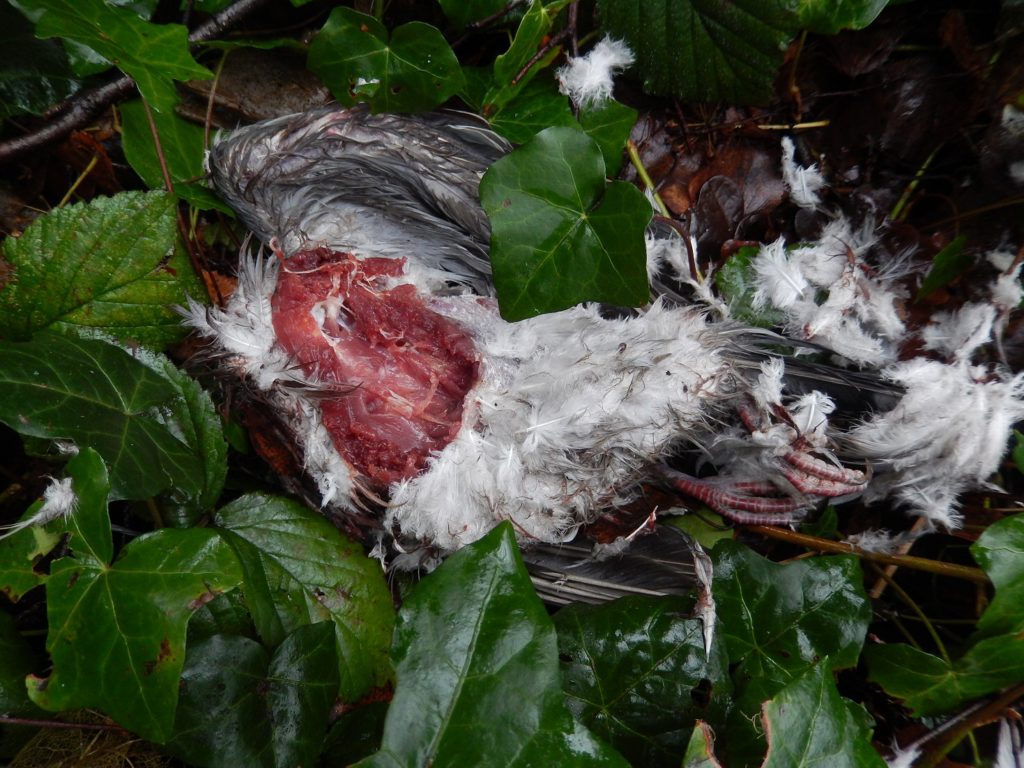
Many of the photos on this website show nature at its prettiest. Well, not today, but still surely of interest. Nature is in Alfred, Lord Tennyson’s phrase “red in tooth and claw”—or in this case in beak and claw: a Wood Pigeon killed, plucked and partly eaten by a Sparrowhawk. There were many plucked feathers all about, mainly to the right and bottom of the image, an instantly recognisable scene of predation and carnage. The Sparrowhawks nest at the other end of the reserve, and they kill a pigeon somewhere that we notice most weeks. Netty disturbed this one on her walk round this morning, and given the cold damp weather she was surely the first person into the reserve today. The sparrowhawk, definitely not very large and brownish, was either a male or a juvenile.
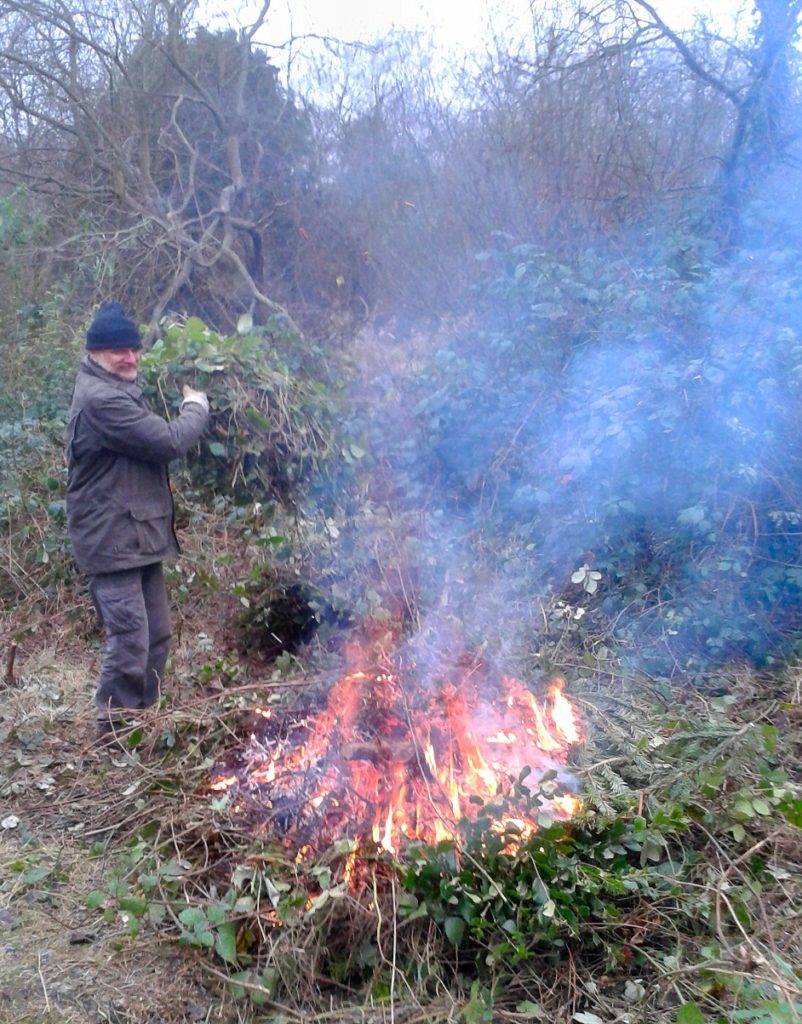
I nearly stayed home today, with the thermometer on -1 Celsius and a chilly wind off a frozen continent for the windchill factor, but I wrapped up warm with 2 fleeces and a bodywarmer under my jacket, and turned up at the hut. No other volunteers arrived, so Netty and I were the team. She said let’s make a fire: she had come equipped with potatoes to roast in case everybody felt like making a celebration out of it. We left them in the hut. I had a biscuit and a cup of tea and we bravely stepped outside.
I cut up a large Christmas tree with loppers: it was clearly an excellent specimen, as it still had all its leaves a month after Christmas, and smelt pleasantly resiny. It caught fire splendidly, and soon we had a fine blaze. It ate up quantities of brambles. The Holm Oaks that I’d cut also burnt well, if anything even better than the conifer; it seems to contain a lot of resin too.
I didn’t think about being cold at all while I worked, so the fire must indeed have been hot. I went home reeking of smoke.
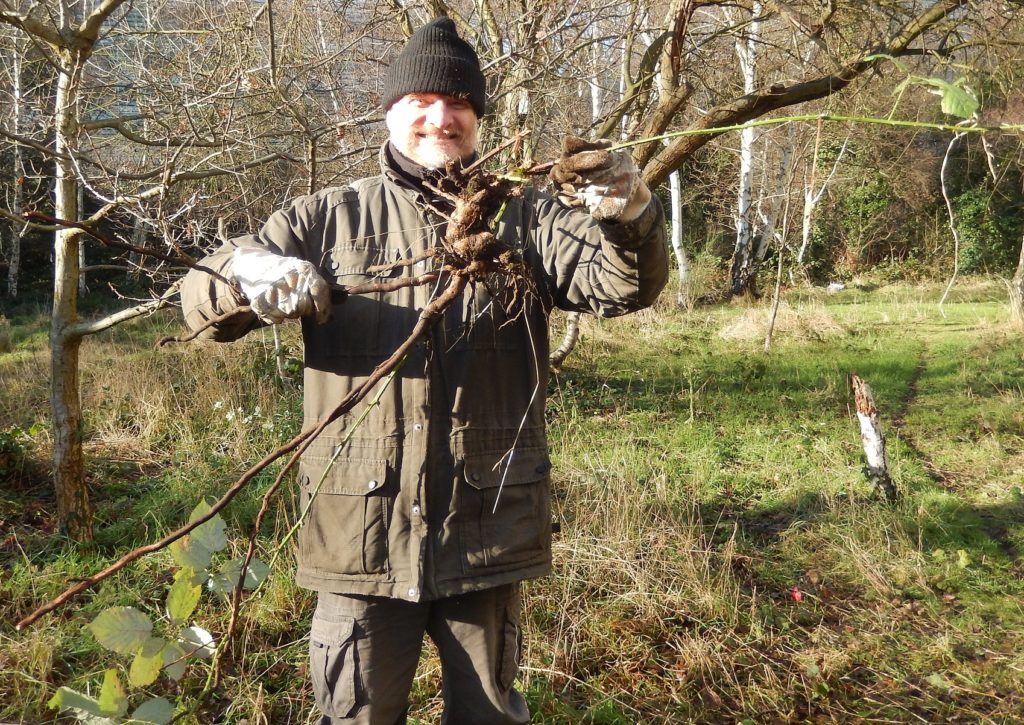
The Wurzels once sang about a giant marrow, to the immortal words “Oh what a beauty / I never saw one as big as that before”. I can’t imagine what they were referring to. Anyway, today in beautiful winter sunshine after days of rain, it was perfect weather for digging brambles out of the South-facing butterfly bank above the old railway track (which I’m standing on in the photo). The ground, too, was ideally soft and well-watered, so the roots came out with hardly any digging. Just before it was time to stop, my fork struck a large lump of wood, right under a small tuft of bramble stalks. I removed the loose earth above it, and made out to my pleasure half-a-dozen stalks that had been clipped off at ground level in earlier years as too difficult to dig out. Well, today was the day, and after really not very much wriggling with the fork, pulling and leaning on the fork handle, I triumphantly wrenched this grandfather-of-all-brambles from the ground, including to my surprise the yard-long taproot below my right hand. In short, a monster, if not a marrow.
The bank, by the way, is the reserve’s best place for Gatekeeper butterflies – we saw 35 there at once, on a stretch of the bank which was well weeded and grassy at the time. Now we have a far longer stretch all de-brambled at once, so perhaps we’ll have a bumper butterfly year, let’s hope so. And there are quite a few young Buddleias (“butterfly bushes”) self-seeded on the bank, a pleasantly “railway” feature, so the signs are good.